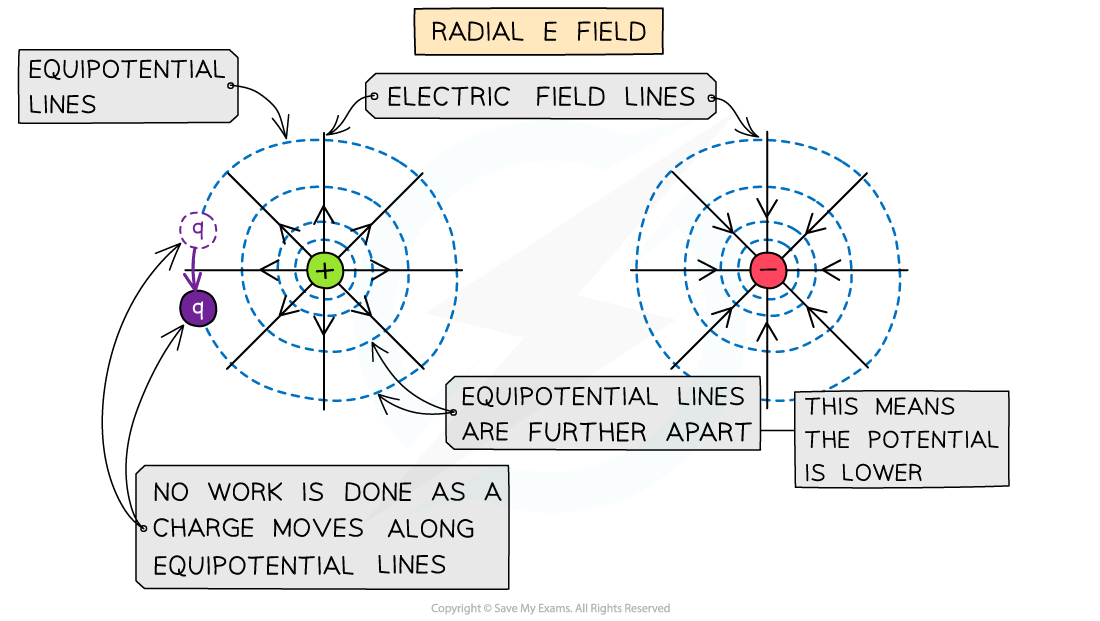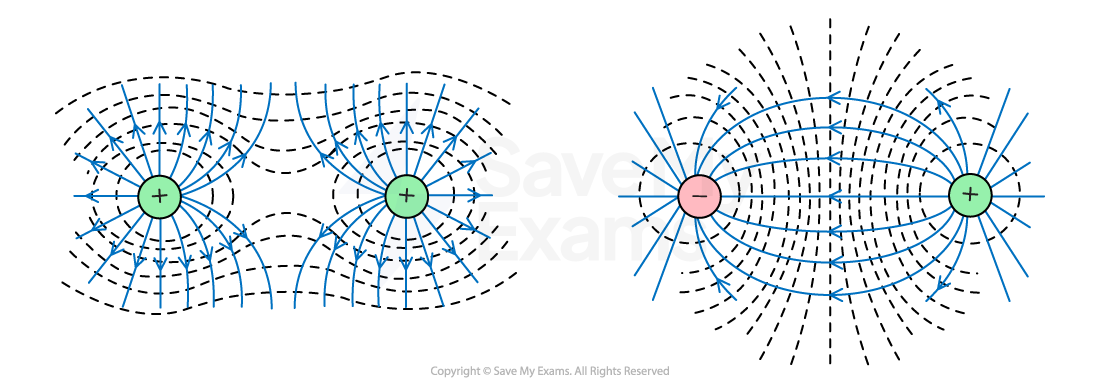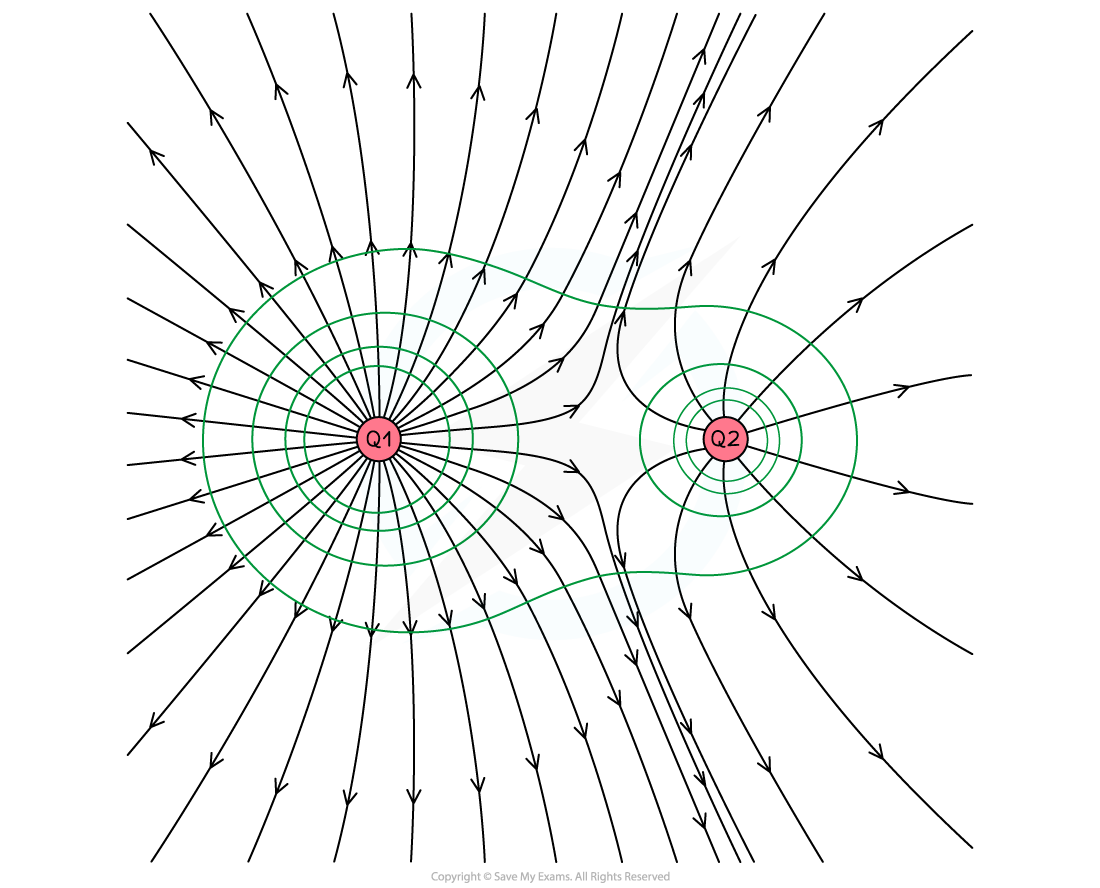Electric Equipotential Surfaces (DP IB Physics): Revision Note
Electric Equipotential Surfaces
Equipotential surfaces are lines of equal electric potential
They are always perpendicular to the electric field lines
In a radial field, the equipotential lines are represented by concentric circles around the charge
The equipotential lines become farther away from each other with increasing radius
In a uniform electric field, the equipotential lines are equally spaced
If a charge moves along an equipotential surface (or line), no work is done
This means the potential energy of the charge does not change
Equipotential lines are used to represent potential gradient
For example, for a positive point charge:
The lines become closer together nearer the charge, this represents the potential gradient becoming steeper
If a positive test charge is pushed towards the charge, more work must be done to move it gradually closer

The left side image shows the equipotential lines for a point charge acting like contours on a map. They are perpendicular to the field lines, as shown on the right side image
Equipotential Surfaces & Electric Field Lines
Equipotential surfaces can be drawn to represent the electric potential for a number of scenarios, such as
for a point charge
for multiple charges (up to four point charges)
inside and outside solid and hollow charged conducting spheres
between two oppositely charged parallel plates
Equipotential surface for a point charge
In a radial field, such as around a point charge, the equipotential lines:
are concentric circles around the charge
become progressively further apart with distance

Equipotential lines for a radial electric field are concentric circles which increase in radius and are perpendicular to the field lines
If a charged conducting sphere replaced a point charge, the equipotential surface would be the same
Equipotential surface for multiple charges
The equipotential surfaces for a dipole (two opposite charges) and for two like charges are shown below:

The equipotential surface for multiple charges can be obtained by drawing curves which are perpendicular to the field lines
An equipotential surface between two opposite charges can be identified by a central line at a potential of 0 V
This is the point where the opposing potentials cancel
An equipotential surface between two like charges can be identified by a region of empty space between them
This is the point where the resultant field is zero

Equipotential lines show that the potential has the greatest value near the charge and decreases with distance
Equipotential surface between parallel plates
In a uniform field, such as between two parallel plates, the equipotential lines are:
horizontal straight lines
parallel
equally spaced

The equipotential lines for a uniform field are evenly spaced parallel lines which are perpendicular to the field lines
Worked Example
In the following diagram, two electric charges are shown which include the electric field lines

(a) Draw the lines of equipotential including at least four lines and at least one that encircles both charges
(b) By considering the field lines and equipotentials from part (a), state what can be assumed about the two charges
Answer:
Part (a)
The lines of equipotential need to be perpendicular to the field lines at all times
These lines are almost circular when they are near the charges
And when moving out further the lines of equipotential cover both charges.
The lines of equipotential can be seen below

Part (b)
It can be assumed that both charges are positive since the field lines point outwards.
It can also be assumed that the charge on the left has a larger charge than the charge on the right since:
It has a greater density of field lines
It has a larger sphere of influence shown by the lines of equipotential
The point of zero electric field strength between the two charges is closer to the right charge
Examiner Tips and Tricks
The distinction between radial and uniform fields is an important one, remember:
a radial field is made up of lines which follow the radius of a circle
a uniform field is made up of lines which are a uniform distance apart
When drawing equipotential lines, remember that they do not have arrows since they have no particular direction and are not vectors.

Unlock more, it's free!
Did this page help you?